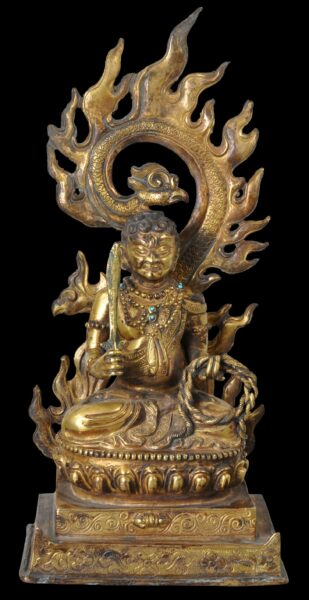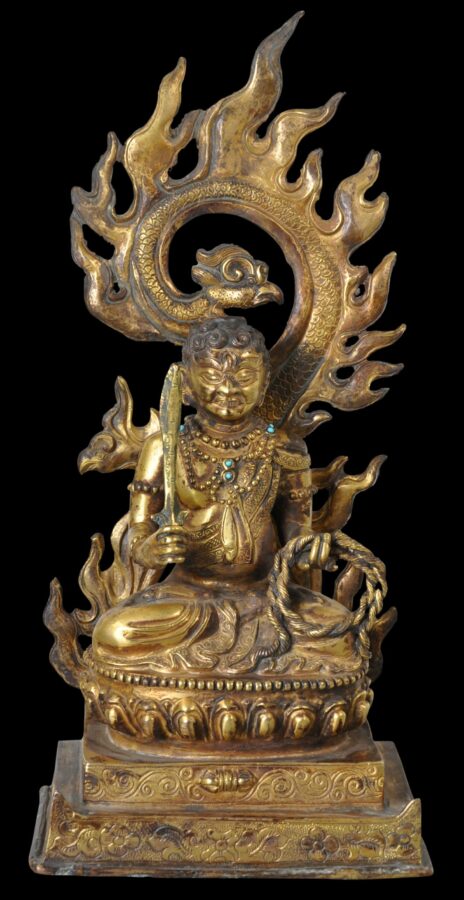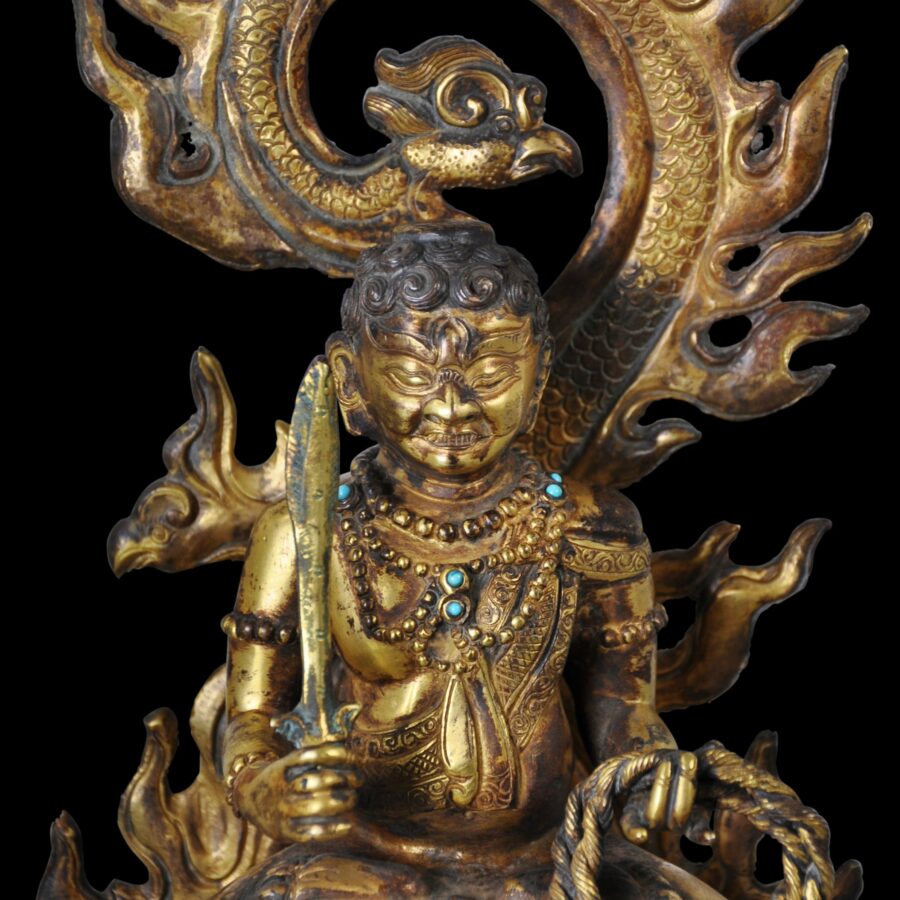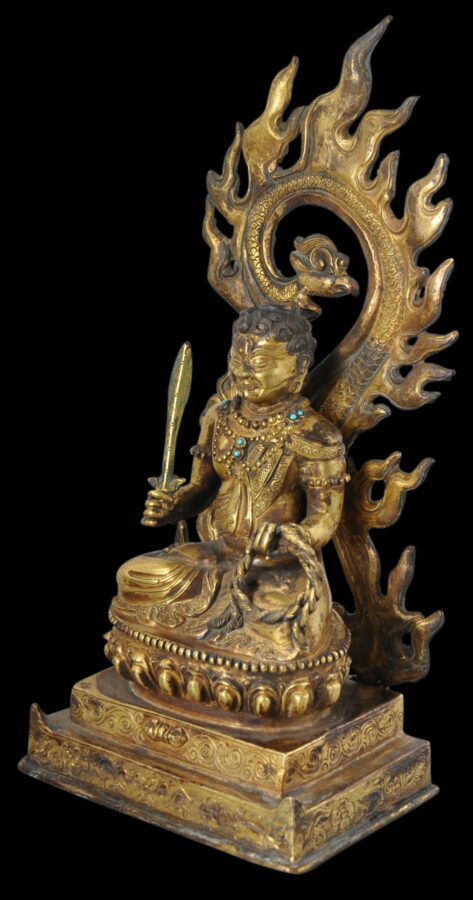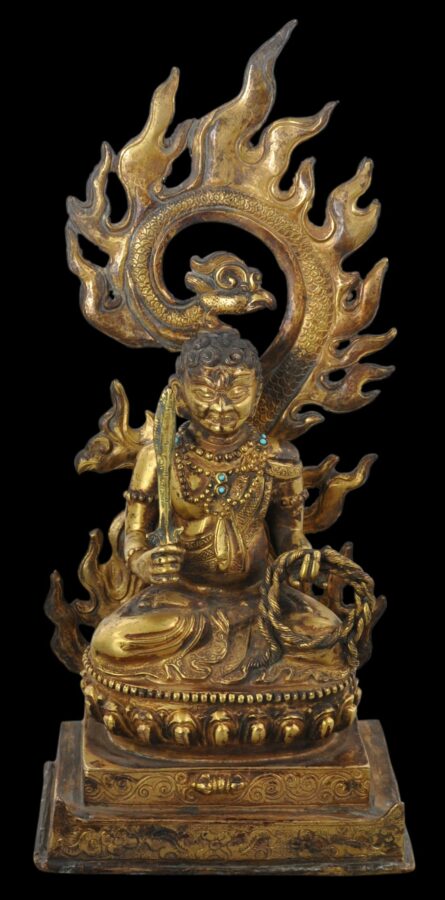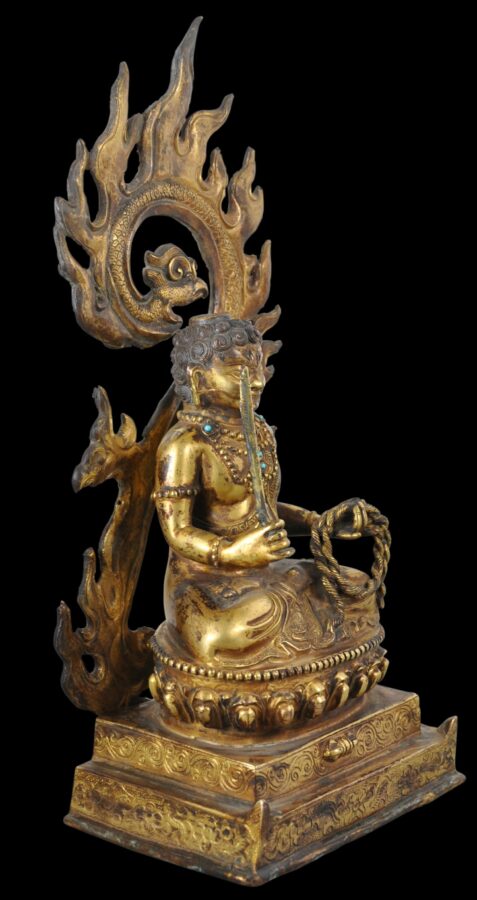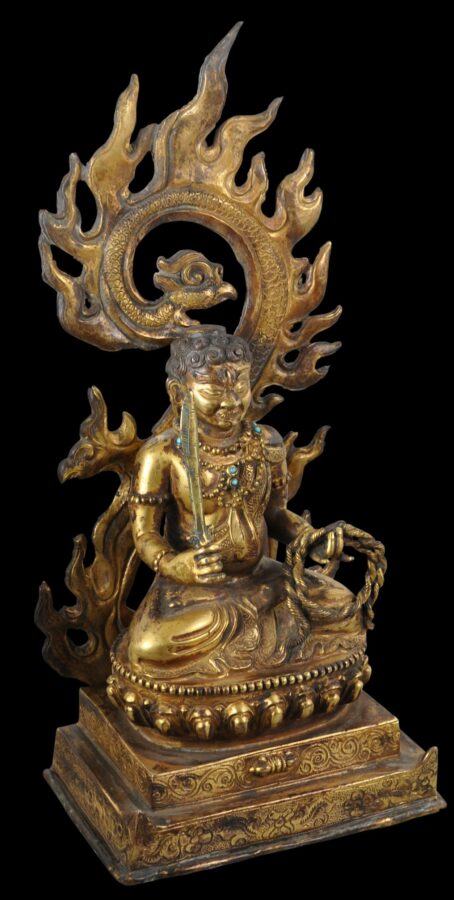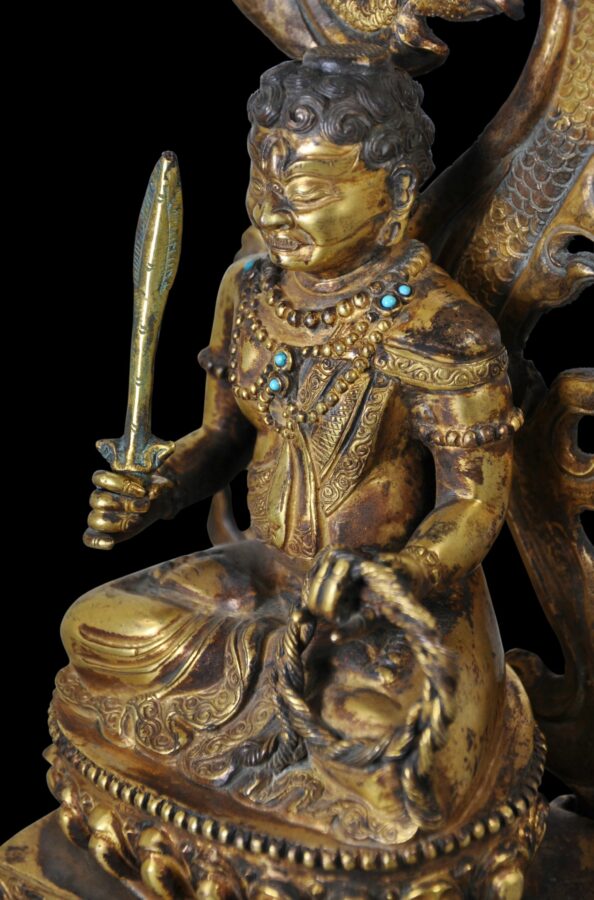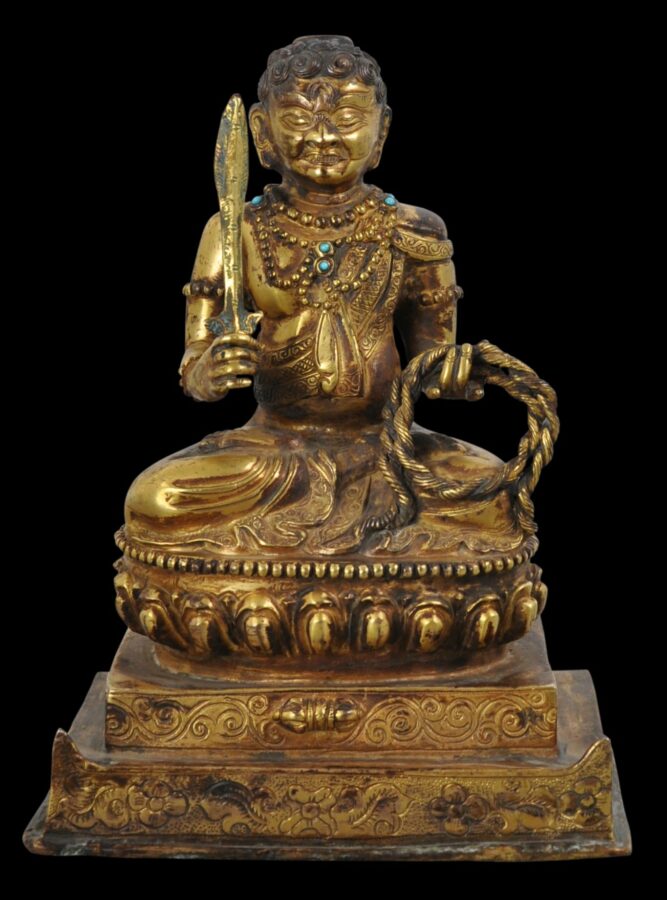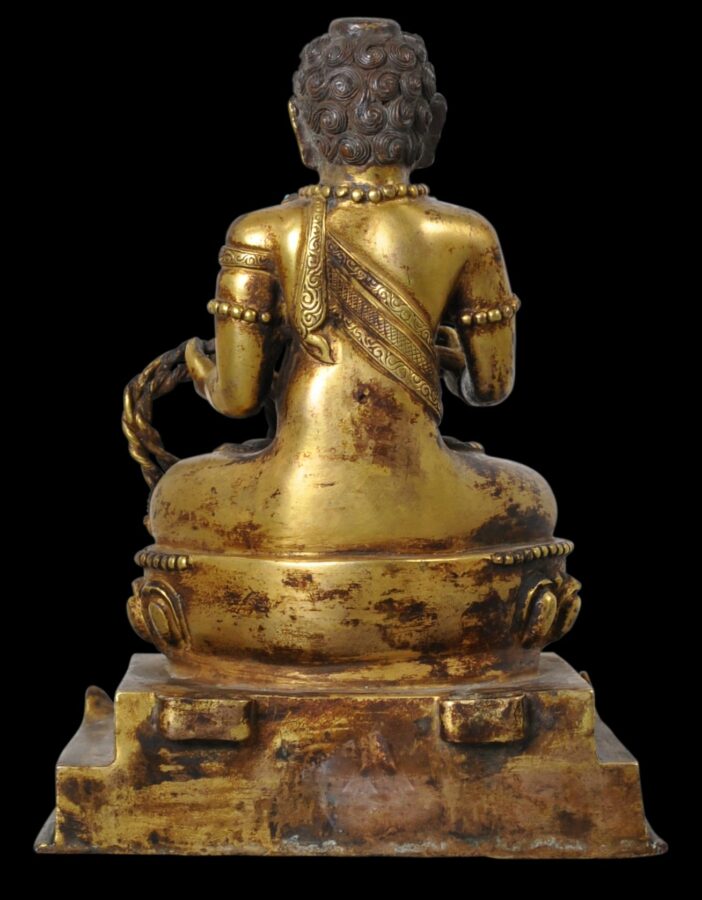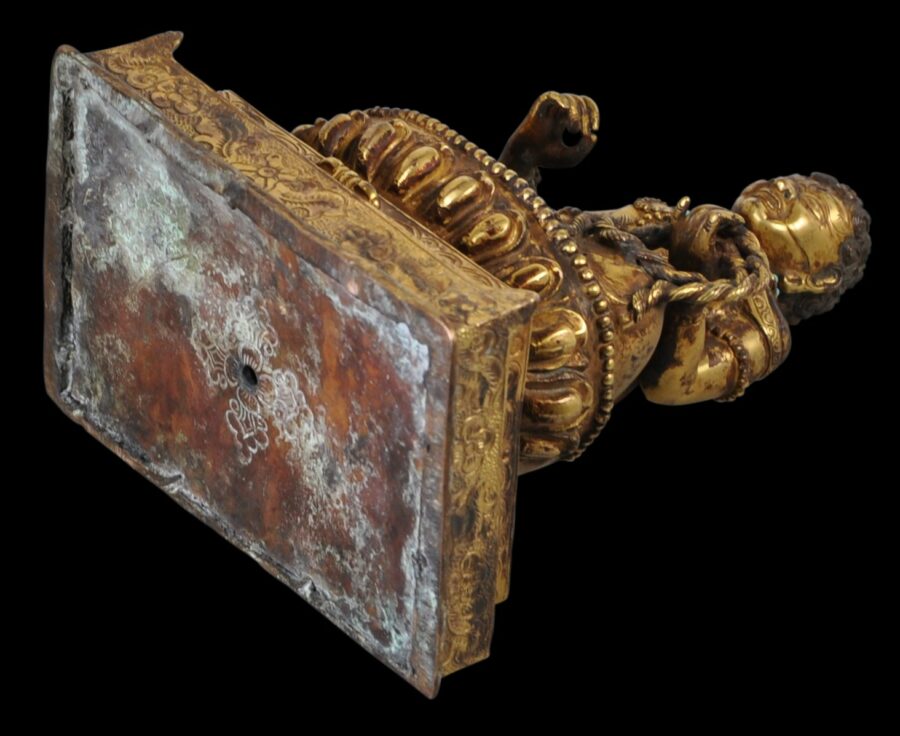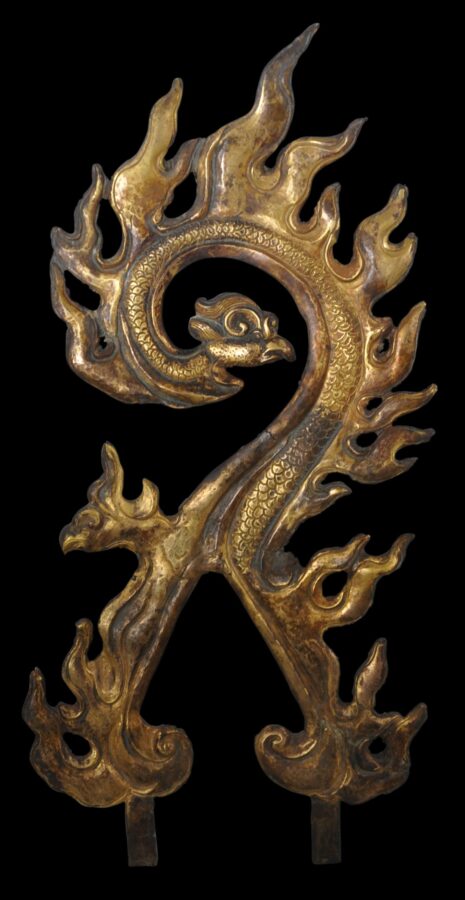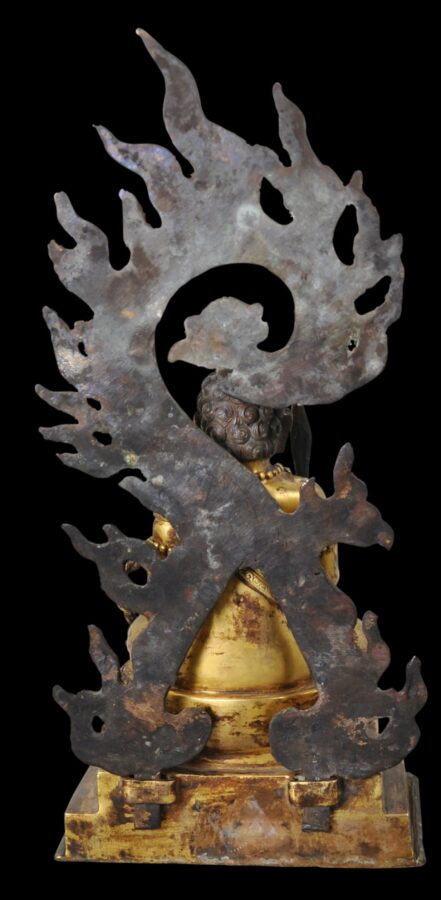This well-crafted bronze is of Acala (‘The Immovable’), a wrathful deity and dharmapala (protector of the Dharma or the Buddha’s teachings) in East Asian Buddhism.
This image is from China, where Acala is known as Budong Mingwang (不動明王). It has been cast in bronze and then gilded (gold plated) and inset with turquoise cabochons.
Acala sits cross-legged on a lotus cushion atop a stepped, rectangular dais that has been engraved with floral scrolling motifs, and cast in high relief with a vajra emblem. He is adorned with flowing robes, ample necklaces set with turquoise and other jewellery, and holds a noose in one hand and a sword in the other. The sword and the noose are both identifying attributes for Acala. The sword, like the throneback has been cast separately. The sword slips into the hand.
Though grimacing and aged, his face has been rendered with naturalistic and human expressiveness. His hair has been finely rendered with loose curls. Other fine details include delineated fingernails, bared teeth and side fangs, and the twisted strands of the noose.
Acala’s eyes and fangs are mismatched – one fang for example points down and the other points up. The duality and nonduality of his nature (and of reality) is symbolised by the the upward pointing fang which has been interpreted as an allegory for the elevation towards enlightenment, and the downwards fang is that for the descent of enlightened beings into the world to teach sentient beings.
The throneback or nimbus is unusual and dramatic: it is in the form of a swirling, flaming phoenix or garuda. (In China and Japan, such a flaming backplate in the form of a garuda or phoenix is an identifying feature of Acala.)
The copper base is intact and engraved with a double vajra motif. The base has some green oxidation from the copper.
The image shows Tibetan influence. The Qing dynasty emperors especially were influenced by Tibetan and particularly Gelugpa teachings. Often several Tibetan lamas were found at Court, and over time, there were as many as one hundred Tibetan Buddhist monasteries and temples in Beijing occupied by lamas from Tibet, Mongolia and China.
The image has clear age and is in fine condition.
References
Lipton, B., & N.D. Ragnubs, Treasures of Tibetan Art: Collections of the Jacques Marchais Museum of Tibetan Art, Oxford University Press, 1996.


